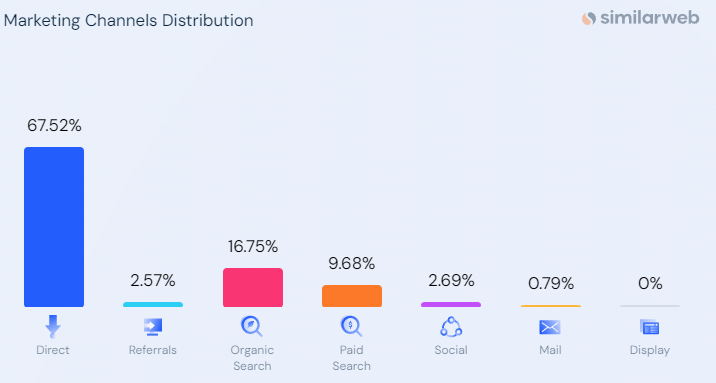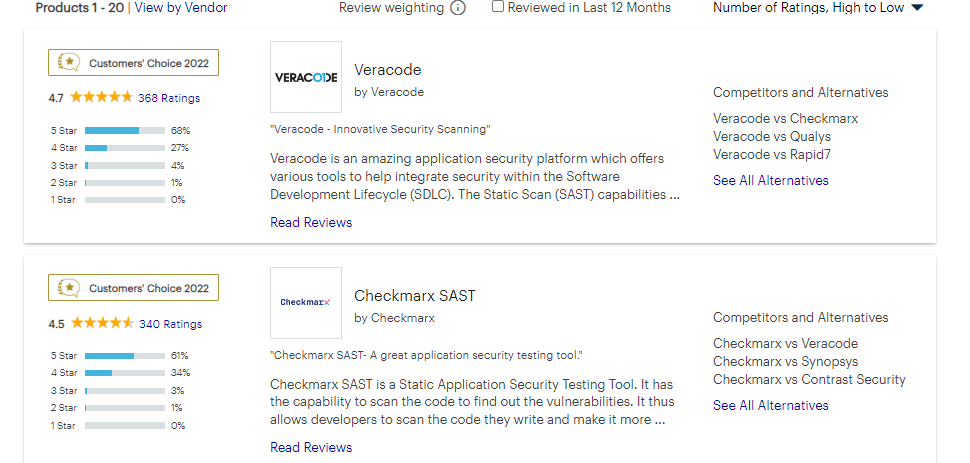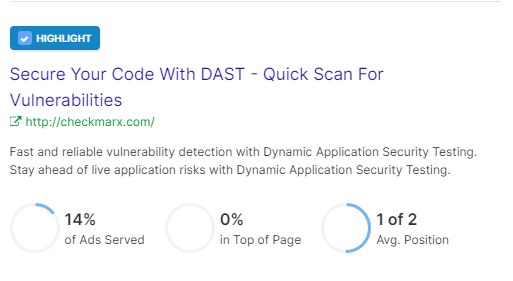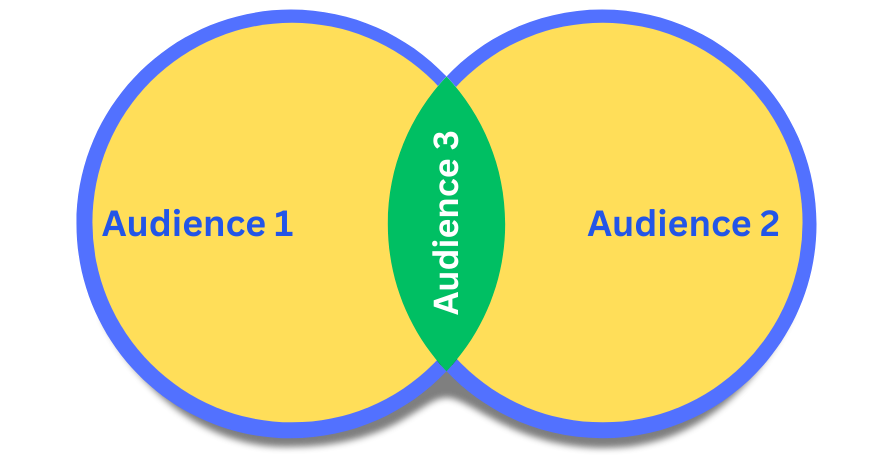Unveiling Competitor PPC Strategies with Free Tools

The amount of insights you can get into what your competitors do online nowadays is just about crazy.
Leveraging that data you didn’t have to pay for is a huge step forward, understanding what works and what doesn’t. Like with everything in marketing, testing is a big part of what you do day to day, so why not learn from the mistakes of others before you start making your own 🙂
Let’s pretend we’re working for a boutique company called ACME, and we’ve got an application security testing product that we’d like to get the word out about.
Identifying Competitors
First things first. With a quick search on Gartner or any other semi-trusted platforms for reviews using the keyword: “application security testing” we can find out two big dogs are Veracode & Checkmarx SAST. I will pick Veracode for this example to keep it short, but ideally, you’d be going through a list of 5-10 competitors to get a full overview of the field.

Analyzing Traffic Sources
Next, we’ll dive into SimilarWeb.com to see the traffic sources for Veracode.
It looks like a big part of the traffic here is Organic and Direct, which means they’re not doing a lot of advertising. Let’s turn to the next competitor, Checkmarx. We’ve got a 9.68% Paid Search and 2.69% Social traffic.

Let’s try to find their ads on Google using the Google Ads Transparency Center:
https://adstransparency.google.com/

Looks like they mostly do Paid Search, no display ads and they also have dynamic Google ads search campaigns set up (which is just an automated way to serve different keyword/landing page and message combinations).
Keyword Analysis
Out of this we can get some keywords that can help us understand the terms they are targeting. One thing to note here is to check which ad has been running the most by playing with the time filter. That way, we can understand which keyword and campaign theme to focus on first.
Here are the main keywords: ”application security” DOH
“web application security” - good niche keyword
“API security”
“App vulnerability detection”
“SCA Tools”
Going to SpyFu (free) we’re just going to get some ballpark figures on their estimated monthly budget ($17,540)
We also discovered that Stackhawk is a main PPC competitor, so that’s one to look at and repeat the process.
Ad Copy Investigation
Looks like most ads and clicks are for “pen testing tools” and “security penetration testing” - of course, with the full plan, we can uncover a lot more.
“penetration testing tools” is half the CPC cost of “security penetration testing” so we’ll start our ad group with that - aiming for a max CPC at $17 within the US.
This keyword has a monthly volume of 1600, so there’s enough to go around. We’ll need to make sure we rule out any keywords that are not related to our product by building a common-sense negative keywords list. If the budget is tight, just go for a phrase match on a longer tail keyword based on the original one.
Doing a quick search for our keyword, we see that multiple matches are not relevant to our campaign, which we need to exclude, like:
physical penetration testing tools
free penetration testing tools
phases of a pen test and tools
etc.
You should also exclude any other that may apply, like platform-specific or other services.
Using the “Ads History” section from SpyFu, we can see that the most served ad has been using the angle “quick scan for vulnerabilities, secure your code”. That gives us a good base to start our campaign within terms of angle and messaging.

Invicti.com has a bigger coverage of the keyword and seems to have multiple variants of ads already tested for us.

This tells us that being more generic with the ad's title and focusing on the tools is better (if you look at their ad history).
Also note that being specific on how much time you can save and showing a number for integrations will certainly improve click-through rates, which in the end, will cause our CPC to be lower.
Drawing a Conclusion
Based on all the intel, we can start fleshing out the content for a landing page, an offer that ties specifically to this keyword and ad group. For inspiration, using either a free VPN or SEMrush, you can find out the landing pages used in these ads and figure out the messaging and layout that works best based on what they’re currently using.
Make sure to have a base version that uses their ad copy (90% of it applies to you) and a test where you change only one thing at a time (like testing different titles, different callouts, and different descriptions).
We’ve only covered Google Search, which is a big part of their strategy; however, diving into social media and exploring posts and sponsored posts using their respective ad libraries can yield more insights.
We could be doing a lot more, but this post will end up being too long for anyone’s attention span. I hope this helps someone get a better start on a limited budget to turn a campaign profitable.
Have any questions or projects you need help with? Feel free to reach out to see if I can help.



